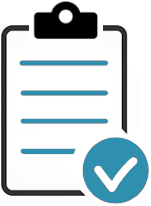ISO 45001 Clause 7.4 Communication should consider what needs to be communicated, why and whether the communication was successful.
Participation and consultation are diffused through 45001, however you need to develop and implement a process (i.e. communication strategy and procedure) to document what, when, with whom and how communication took place.
Contents
The organization must ensure that the communicated information is reliable and consistent with the information arising from the OH&S Management System and is retained as documented information.

Communications may relate to your organization’s ongoing compliance to various obligations, milestone achievements, or sustainable resourcing.
Communication with contractors is also required based on 8.1.4.
Our Communication, Consultation & Participation Procedure is proven to work.
You should seek evidence to confirm that your organization has identified the necessary internal and external communications that are required for the operation of the OH&S Management System.
You should confirm how your organization has determined:
The key to successful implementation is often through the involvement of all people within the organization; let everyone in the company know that you have started to introduce a new health and safety management system by holding basic awareness sessions for all employees. Make sure you retain records of attendance as this action will contribute towards satisfying the clause.
Communication is the key; communicate goals, plans, progress and milestones. Listen first then ask for feedback.
Lack of communication seems to be one of the main root-causes for errors in business. Keep people informed of the progress of the project; e.g.; what’s been done, what’s to be done next and how the project is progressing against the plan.
Make this process transparent and visible to all concerned; for example, place progress charts on the walls and notice boards. Employees that are not part of the implementation team may not be hearing as much about what is going on with the project and may think the project has faded away. Communicate its progress via newsletters, bulletin boards or meetings.
The organisation needs to ensure that procedures to control internal and external communications and interfaces are in place.

Organizations should establish and implement processes and procedures that facilitate effective two-way communication throughout all levels of your business. This should include clear strategic direction from the top of the organization and the enabling of ‘bottom-up’ communication that encourages open and constructive feedback from all personnel.
Internally, your organization needs to communicate information relevant to the OH&S Management System amongst all levels and functions, including information on any change, as appropriate, and have to establish a mechanism to enable all persons performing work under the organization’s control to contribute to continual improvement.
All well as briefing employees during introductory presentations, try using a combination of other methods to promote awareness, such as posters placed on notice boards and leaflets with pay-slips, etc. Use training sessions to inform employees of the plan, how they will be expected to contribute.
Our Communication, Consultation & Participation Procedure is proven to work.
Issues pertaining to the OH&S Management System that could be communicated include:
Effective communication media:
Auditors will wish to determine if the policies meet the intent and are understood, by interviewing personnel at all levels.
Although the exact content of the policies does not need to be recited by interviewees, the awareness of the policies and how their job affects the company objectives should be determined.
This does not require your employees to memorize the policies but it does mean they should be aware of it, know where it may be found and be able to paraphrase, or give an interpretation as it applies to them.
If the personnel interviewed do not know what their measurable objectives are and/or do not know what the organizational objectives are, the auditor would be further directed to evaluate top management’s communication of the policies and objectives.
Your organization should encourage the two-way flow of information between your workforce and management.
Input from employees is considered vital in the development of health and safety policies and procedures. Employee’s input on concerns relating to health and safety and any feedback on how the health and safety management system can be improved are equally as important.
It is also vital that your employees are kept informed of matters relating to their health, safety and welfare via Health and Safety Representatives, Supervisors and Managers. Communication and consultation should take place both formally and informally. Health and safety representatives can be appointed to assist your company with the process.
Health and safety representatives will attend health and safety committee meetings where as part of their duties they will be encouraged to raise health & safety matters on behalf of the employees they represent and also feedback on information and practices relating to health and safety of employees.
Your organization should also communicate health and safety requirements to its visitors and contractors that attending your sites.
Visitors to each site should receive health and safety information relating to the site rules and procedures during signing in. In addition, contractors should be required to go through a contractor’s induction briefing.

Externally, your organization needs to communicate as required by its compliance obligations.
Particular care needs to be taken when dealing with communications from external parties, which might well include enforcement authorities, lawyers/solicitors, insurance companies, etc. In many parts of the world there is an increasing trend towards litigation resulting from injuries received in the workplace, so the need to manage the communication process is critical.
Additionally, organizations may choose to communicate on other issues, as appropriate. The process has to ensure that all received communications are responded to appropriately.
In most instances, external interested parties (such as consumers, stockholders, neighboring communities, etc.) are the main driving forces for organizations to implement an OH&S Management System.
The various means of such communication are endless.
The appropriate external communications may establish health and safety credibility and satisfy stakeholder requests by presenting objective information on the organization’s significant hazards, its management system, or its performance.
Such communication may benefit your organization in several ways, including improved employee morale and increased market exposure, either of which can lead to increased profits.
Our Communication, Consultation & Participation Procedure is proven to work.
Updated: 11th April 2022
Author: Richard Keen

Richard is our Compliance Director, responsible for content & product development.
But most importantly he is ISO's biggest fanboy and a true evangelist of the standards.
Learn more about Richard

Don’t Try to Manage It All Alone!
Our ISO Auditors and OH&S Trainers have been in this industry for years, and since 2002 we’ve been providing thousands of small businesses and large corporations with the tools they need to get certified.
Instead of trying to create everything you need to follow this process from scratch, use ours. We have procedures, templates, checklists, process maps, forms and gap analysis tools to help you control your documented information without missing a single input or output.
Before you invest all the hours reinventing the wheel, before you spend countless dollars outsourcing the task — try our templates.
| QMS ISO 9001 |
EMS ISO 14001 |
OH&S ISO 45001 |
|
|
Communication, Consultation & Participation Procedure The purpose of this procedure is to outline your organization’s guidelines for managing our internal and external communications in order to encourage the two-way flow of information between our workforce and management. Communication takes place both formally and informally. Health & Safety Representatives are appointed to assist with the process. Forms & Reports also included:
>> Free Download - Control of Calibrated Equipment Procedure - this will give you a good idea of what to expect when you purchase the procedure. |
$19 USD
|
Pay by Credit Card, Debit Card, PayPal or Apple Pay.


|
Please read our Money Back Guarantee. |
Bought by Small Businesses and Large Corporations our templates have been sold online and CD since 2002.
Used by:
The Templates are used by first-timers following our step-by-step, clause-by-clause guidance documents; and experienced Quality Managers wishing to streamline and improve their existing documentation.
The application of our templates is scalable and generic; regardless of the size and type of organization. The elements that form the quality management system are the same.
1. Our customizable templates save you time and money by offering a streamlined process to create your quality documentation
2. They’ve got everything you need in one simple template
3. Proven to work our templates have helped thousands of businesses big and small achieve certification
4. Documents use styles to make reformatting and rebranding a breeze
5. Our templates are generalizable for any industry or sector. The application of our templates is scalable and generic; regardless of the size and type of organization.